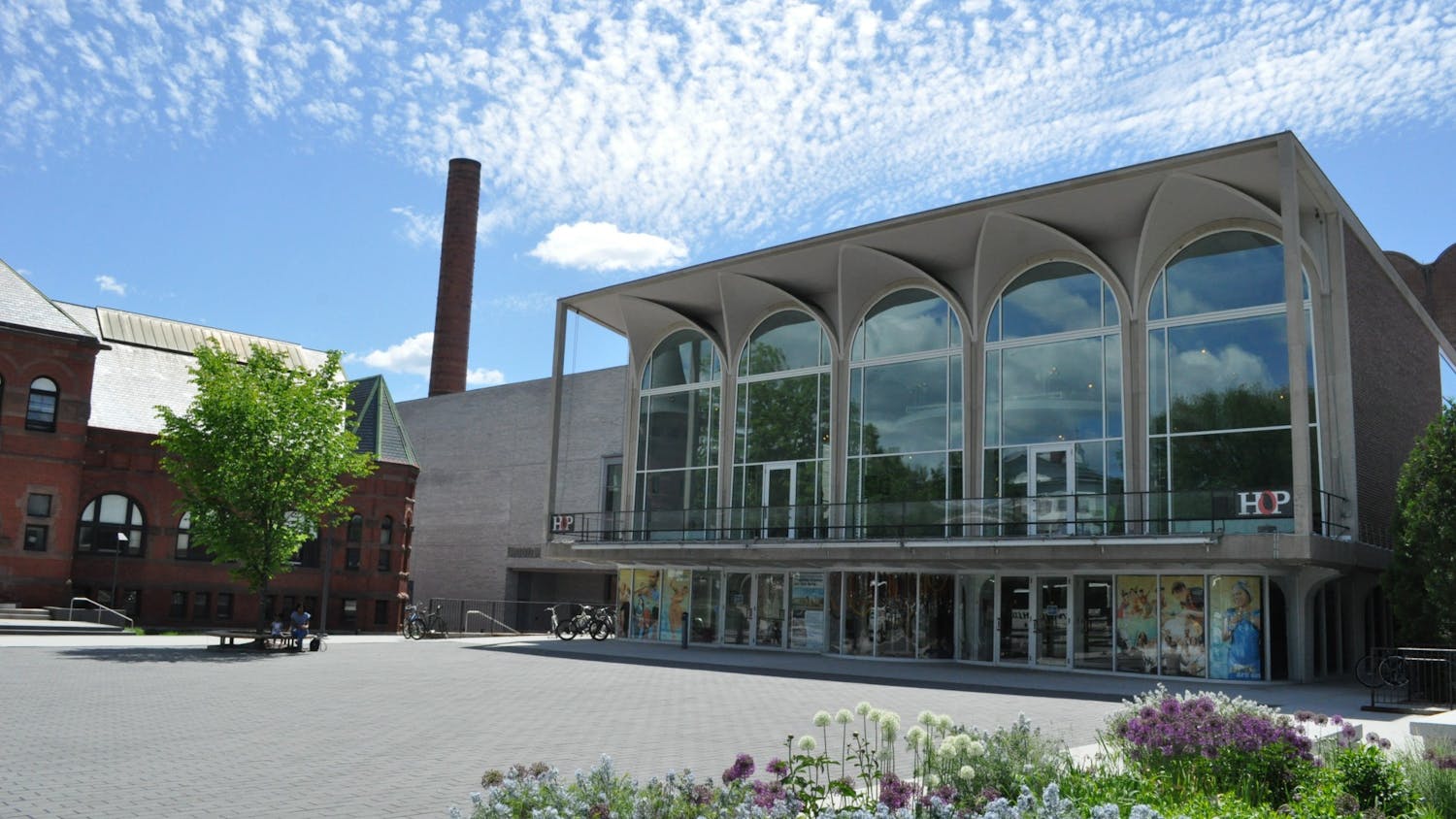Hotel Modern the Dutch theater troupe famous for such "live animations" will bring its latest production, "The Great War," to the stage of the Moore Theater at the Hopkins Center this weekend. The internationally acclaimed performance combines its miniature set with live narration and Foley sound effects to bring audiences a fabulous take on an oft-explored topic.
Hotel Modern was founded by Arlene Hoornweg and Pauline Kalker in 1997 as an outlet for mixing different forms of art on stage. The group is now composed of four actors Hoornweg, Kalker, Herman Helle and Arthur Sauer.
Perhaps the most unusual and attention-grabbing aspect of Hotel Modern's work is the miniature scale of the set, which comes to life through the use of household items, including potting soil, matches and sawdust. As the performance unfolds, the audience witnesses the real-time construction of a landscape that, save for its diminutive size, is surprisingly realistic. When viewed on the large screen that displays the diorama-like action close-up, the images of the props expand to almost life-size proportions.
According to Helle, who both makes the models and manipulates them on stage, Hotel Modern chooses its props with the flow of the final performance in mind.
"We try to use the simplest materials possible because we are making the set as the audience watches us," Helle said in an interview with The Dartmouth. "The props have to be able to come together quickly the parsley trees, for instance. I could spend hours trying to make a tree model or I could use a sprig of parsley which looks exactly like a tiny tree."
In addition to recreating the imagery of the war, Hotel Modern incorporates other sensory details particularly sounds and smells that the company hopes will help provide audiences with a genuine taste of life as a French soldier during WWI. As the performers use matches to burn down paper landscapes, for example, the audience smells an odor similar to that given off by the sulfur in gunpowder.
"The Great War" also features the words of real soldiers through live readings by actors of authentic WWI letters. By capturing the boredom, frustration and discomfort of trench living, each reading transforms the figurines into real people who fought and died, reminding viewers that the production is not just art, but a recreation of an actual event.
According to Helle, the letters' use allows Hotel Modern to more fully convey the feeling of trench living during WWI.
"We had to eventually add text to The Great War' because it would have just been too difficult to work without the words, but the essence is still there," he said.
One of the most interesting aspects of the performance is the manner in which the live action translates to "live animation" on the big screen, according to Helle. Viewers have the option of watching the "finished product" on the big screen or they can turn their attention to the members of the troupe scurrying across the stage, preparing the next set, moving the figurines or creating sound effects.
As a result, the art of the production lies not only in the innovative use of props but also in the flawless juxtaposition of video with live performance. Viewers watch the actors on stage build the set in a matter of seconds. At the same time, on the screen, they see disembodied hands arranging the soldiers, only to flick them away as they get shot by guns seconds later.
"It's really a magical thing," Helle said. "You see nothing at first and suddenly giant hands come in and make the set out of everyday objects. And when they exit the frame you are left with a complete landscape. By taking the simplest possible solution to make the optimal result, it's like you're making something out of nothing."




